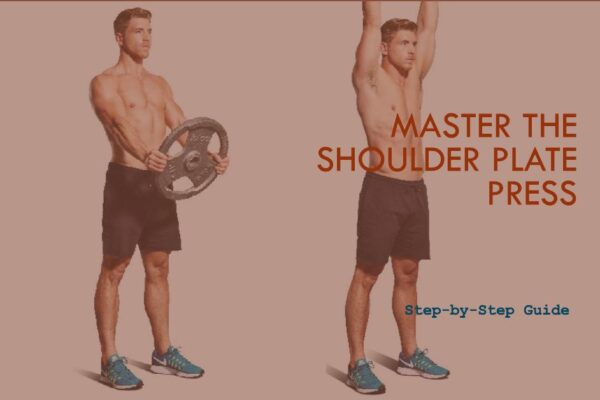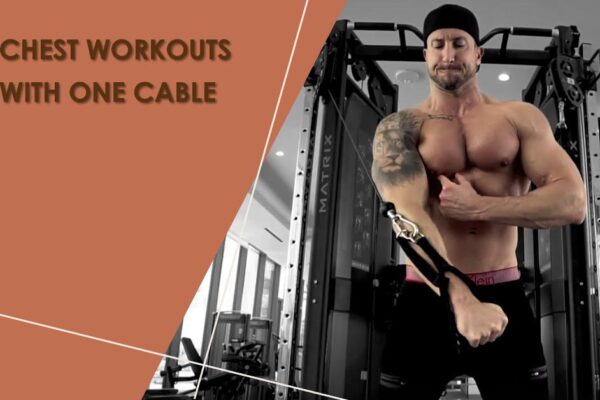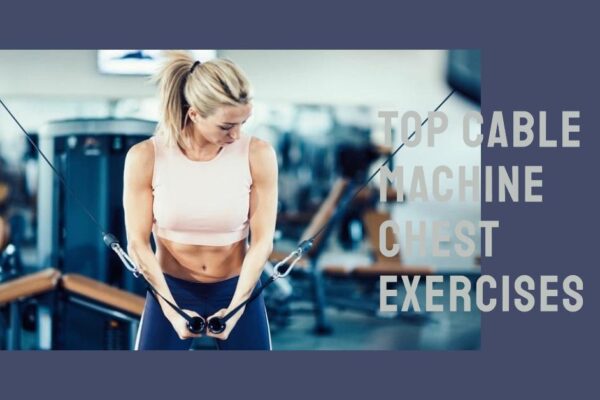When comparing the Bent Over Row and Dumbbell Row, it’s essential to understand the distinct benefits and considerations associated with each exercise. The Bent Over Row is known for its effectiveness in targeting the back muscles, particularly the lats, rhomboids, and trapezius. On the other hand, the Dumbbell Row offers a unilateral movement, enabling a more isolated focus on the back muscles while also engaging stabilizing muscles for balance and control.
Difference Between Bent Over Row vs Dumbbell Row
The key differences between Bent Over Row vs Dumbbell Row are listed below.
| Aspect | Bent Over Row | Dumbbell Row |
|---|---|---|
| Muscle Engagement | Engages back muscles, particularly the lats, rhomboids, and trapezius. | Targets back muscles with potential for more isolated focus and stabilizer muscle engagement. |
| Range of Motion | Full-body compound movement. | Unilateral movement, allowing isolated focus on each side of the body. |
| Stability and Balance | Requires stability and balance due to the barbell grip. | Engages stabilizing muscles for balance and control during the movement. |
| Weight Variation | Typically allows for heavier weights to be used. | Offers the flexibility of using more weight in each hand. |
| Lower Back Stress | Puts more stress on the lower back due to the bent-over position. | Eases stress on the lower back, making it a suitable alternative for individuals with lower back concerns. |
Bent Over Row vs Dumbbell Row: Which is Better?
When comparing the Bent Over Row and Dumbbell Row, it’s important to consider the distinct benefits and differences between the two exercises.
The Bent Over Row is known for its effectiveness in engaging back muscles, particularly the lats, rhomboids, and trapezius. It involves a full-body compound movement and requires stability and balance due to the bent-over position. However, it can put more stress on the lower back.
On the other hand, the Dumbbell Row offers a more isolated focus on the back muscles and allows for unilateral movement, engaging stabilizing muscles for balance and control without stressing the lower back as much.
It’s evident that both exercises have their unique advantages, and the choice between them depends on individual fitness goals, preferences, and any specific concerns related to the lower back or stability. Ultimately, the “better” exercise is subjective and depends on the specific needs and objectives of the individual.
Bent Over Row
The Bent Over Row is a compound strength training exercise that targets the muscles of the back, including the latissimus dorsi, rhomboids, and trapezius, as well as the biceps and forearms. It involves bending at the hips and knees, maintaining a straight back, and pulling a barbell towards the lower chest to engage the back muscles effectively. This exercise is known for its effectiveness in building back strength and promoting overall upper-body development.

How To Do It:
To perform the Bent Over Row with proper form, follow these steps:
A. Set up and Equipment Needed:
- You will need a barbell and weights.
- Stand with your feet shoulder-width apart and hold the barbell with an overhand grip, hands slightly wider than shoulder-width apart.
B. Initial Position:
- Bend at your hips and knees to lower your torso until it’s nearly parallel to the floor.
- Keep your back straight and core engaged.
- Your arms should be fully extended towards the floor, and the barbell should hang directly beneath your shoulders.
C. Execution of the Exercise:
- Pull the barbell towards your lower chest by driving your elbows behind you, keeping the bar close to your body.
- Focus on engaging the back muscles throughout the movement.
- Lower the bar back down with control to complete one repetition.
D. Breathing Tips:
- Inhale as you lower the bar towards the floor.
- Exhale as you pull the bar towards your lower chest.
Muscle Targeted:
The Bent Over Row primarily targets the following muscles:
- Latissimus Dorsi: This is the largest muscle in the back and is responsible for shoulder extension, adduction, and medial rotation.
- Trapezius: The trapezius is a large, triangular muscle that extends over the back of the neck and shoulders and moves the shoulder blade.
- Rhomboids: These muscles are located in the upper back and are responsible for retracting the scapula.
Benefits of Bent Over Row
- Back Muscle Engagement: Bent-over rows target the latissimus dorsi, rhomboids, and traps, promoting significant muscle activation in the upper and middle back.
- Improved Posture: Incorporating bent-over rows into your routine helps strengthen the muscles responsible for maintaining proper posture, reducing the risk of slouching or rounded shoulders.
- Enhanced Core Stability: Performing bent-over rows requires a stable core to support the bent-over position, leading to improved core strength and stability over time.
- Increased Grip Strength: As a compound movement, bent over rows also works the muscles in the forearm and hands, contributing to enhanced grip strength, which is beneficial for various exercises and daily activities.
- Versatility in Training: Bent-over rows can be adapted to different equipment, such as barbells, dumbbells, or kettlebells, providing versatility in training options based on individual preferences and equipment availability.
- Overall Upper Body Development: By targeting multiple muscle groups, including the back, shoulders, and arms, bent-over rows contribute to overall upper body development, creating a balanced and well-defined physique.
Common Mistakes to Avoid:
When performing the Bent Over Row, it’s essential to avoid common mistakes to ensure safety and effectiveness. Here are some common mistakes to steer clear of:
- Rounded Back: Allowing the back to round during the movement can lead to strain and potential injury. Maintain a straight, neutral spine throughout the exercise.
- Using Momentum: Avoid using momentum to lift the weight. Focus on controlled movements to fully engage the targeted muscles and reduce the risk of injury.
- Incorrect Grip Width: Using an incorrect grip width can impact the engagement of the targeted muscles. Ensure your hands are at an appropriate width for your body to effectively target the back muscles.
- Improper Breathing: Failing to synchronize your breathing with the movement can lead to decreased performance. Remember to inhale as you lower the bar and exhale as you pull the bar toward your lower chest.
- Jerky Movements: Engaging in jerky or uncontrolled movements can put unnecessary stress on the muscles and joints. Aim for smooth, controlled motions throughout the exercise.
By avoiding these common mistakes and maintaining proper form, you can maximize the benefits of the Bent Over Row while minimizing the risk of injury.
Tips to Maximize the Results:
To maximize the results of the Bent Over Row and achieve optimal back development, consider the following tips:
- Focus on Form: Prioritize maintaining proper form throughout the exercise. Keep your back straight, engage your core, and ensure controlled movements to effectively target the intended muscles.
- Progressive Overload: Gradually increase the weight lifted over time to continually challenge your muscles and promote growth. However, always prioritize form over the amount of weight lifted.
- Full Range of Motion: Aim for a full range of motion during each repetition. Ensure that you fully extend your arms at the bottom of the movement and pull the barbell towards your lower chest with complete contraction of the back muscles.
- Mind-Muscle Connection: Concentrate on establishing a strong mind-muscle connection. Visualize the targeted muscles working throughout the exercise to optimize their activation and growth.
- Variation: Incorporate different variations of the Bent Over Row, such as underhand grip or single-arm rows, to stimulate the back muscles from various angles and prevent plateaus.
- Recovery: Allow for adequate rest and recovery between training sessions to facilitate muscle repair and growth. Additionally, prioritize nutrition and sufficient sleep to support muscle development.
By implementing these tips, you can enhance the effectiveness of your Bent Over Row workouts and achieve better results in back strength and muscular development.
Dumbbell Row
The Dumbbell Row is a fundamental strength training exercise that primarily targets the muscles of the back, including the latissimus dorsi, trapezius, and rhomboids. This exercise involves lifting dumbbells while in a bent-over position, promoting muscular development and strength in the upper body.
Additionally, the Dumbbell Row is known for its versatility and effectiveness in targeting different areas of the back, depending on variations such as single-arm rows or double-arm rows. It’s considered an accessible and beneficial exercise for individuals at various fitness levels.

How To Do An Dumbbell Row
A. Set and Equipment Needed:
- Select a pair of dumbbells that are appropriate for your fitness level.
- Ensure you have enough space to perform the exercise without obstruction.
B. Initial Position:
- Stand with your feet shoulder-width apart, holding a dumbbell in each hand.
- Bend at the hips and knees to lower your torso until it’s almost parallel to the floor.
- Keep your back straight and engage your core muscles to support your spine.
C. Execution of the Exercise:
- Begin with the dumbbells hanging at arm’s length, palms facing your body.
- Pull the dumbbells towards your lower chest, focusing on squeezing your shoulder blades together.
- Lower the dumbbells in a controlled manner back to the starting position.
- Repeat for the desired number of repetitions.
D. Breathing Tips:
- Inhale as you lower the dumbbells towards the floor.
- Exhale as you pull the dumbbells towards your lower chest, emphasizing a strong contraction of the back muscles.
Muscles Targeted by Dumbbell Row
The dumbbell row primarily targets several key muscle groups in the back and arms. Here are the muscles targeted by the dumbbell row, detailed in points:
- Latissimus Dorsi:
- The latissimus dorsi, often referred to as the “lats,” is the largest muscle in the back.
- It’s responsible for adducting, extending, and internally rotating the shoulder joint.
- Trapezius:
- The trapezius muscle is a large, triangular muscle that extends over the back of the neck, shoulders, and upper back.
- It plays a crucial role in shoulder movement, stability, and support.
- Rhomboids:
- The rhomboid muscles, consisting of the major and minor rhomboids, are located in the upper back region.
- They function to retract the scapulae (shoulder blades) and help maintain good posture.
- Posterior Deltoids:
- The posterior deltoids are located on the back of the shoulders.
- They contribute to shoulder extension and transverse extension.
- Biceps and Triceps (Secondary Muscles):
- While the primary focus is on the back muscles, the dumbbell row also engages the biceps and triceps to stabilize and support the movement.
- This secondary engagement contributes to overall arm strength and development.
By targeting these muscle groups, the dumbbell row effectively promotes back and arm strength, stability, and muscular development.
Tips to Maximize the Results
To maximize the results in the dumbbell row, consider the following tips:
- Squeeze Your Mid-Back Muscles: Drive your elbow up and row the weight while keeping your shoulders level. Avoid rotating your lower back.
- Perform Moderate Reps with Appropriate Weight: Aim for sets of 15 to 30 reps with moderate weight. If you can easily perform more than 30 reps, the weight is too light.
- Focus on Proper Form and Shoulder Blade Engagement: Pinch the shoulder blades and squeeze the back muscles at the top of the row movement for proper form.
- Plant Yourself to the Floor: Ensure stability by planting yourself firmly on the floor while performing the dumbbell row.
- Maximize Time Under Tension: Squeeze the lats at the top of the row and return slowly to the starting position to maximize time under tension and full arm extension.
- Use an Adjustable Bench at an Incline: Position the adjustable bench at a 30-45 degree incline and start with your weaker arm when performing the row.
Remember to incorporate these tips into your dumbbell row routine to maximize the effectiveness of the exercise.
Benefits of Dumbbell Row
- Isolation of Back Muscles: Dumbbell rows allow for unilateral movement, enabling better isolation of the latissimus dorsi, rhomboids, and traps on each side, promoting balanced muscle development.
- Enhanced Range of Motion: With dumbbell rows, you can achieve a fuller range of motion compared to some other back exercises, ensuring a more comprehensive contraction of the targeted muscles.
- Reduced Lower Back Strain: The supported position during dumbbell rows, often with one knee and hand on a bench, minimizes stress on the lower back, making it a suitable option for individuals with lower back concerns.
- Improved Muscle Imbalance Correction: Dumbbell rows help address muscle imbalances between the left and right sides of the body, as each side must independently support and lift the weight.
- Focus on Scapular Retraction: Dumbbell rows emphasize scapular retraction, promoting better shoulder blade control and overall shoulder health, which is essential for preventing injuries and improving posture.
- Adaptability to Fitness Levels: Whether you’re a beginner or an advanced lifter, dumbbell rows are easily adaptable to different fitness levels by adjusting the weight, making them a versatile choice for a wide range of individuals.
Common Mistakes to Avoid
Avoiding common mistakes is crucial for a safe and effective Dumbbell row. Here are some pitfalls to steer clear of:
- Using Momentum: Avoid using momentum to lift the weights, as it reduces the effectiveness of the exercise and increases the risk of injury.
- Excessive Body Rotation: Keep your torso stable and minimize body rotation during the rowing motion to isolate the targeted back muscles.
- Neglecting Shoulder Blade Retraction: Failing to retract the shoulder blades at the top of the movement can lead to reduced engagement of the back muscles.
- Incomplete Range of Motion: Ensure a full range of motion by extending your arms fully at the bottom of the movement and pulling the weights up to chest level at the top.
- Incorrect Elbow Position: Avoid flaring your elbows out excessively; instead, keep them close to your body to maintain proper form and reduce strain on the shoulders.
- Overloading with Excessive Weight: Using excessively heavy weights can compromise form and increase the risk of injury. Focus on controlled movements with appropriate resistance.
By avoiding these common mistakes, you can maximize the effectiveness of your dumbbell row workout and reduce the risk of injury.
Remember, proper form is crucial for achieving optimal results and preventing injuries.
Frequently Asked Questions
| Question | Answer |
|---|---|
| Which is better, dumbbell rows or barbell rows? | Dumbbell rows are preferred by some due to less strain on the lower back and better grip training, while barbell rows excel in maximal strength. |
| Is the bent-over row better than the one-arm row? | Both exercises have their advantages; the bent-over row allows for greater weight, while the one-arm row provides a better range of motion. |
| What’s better than bent-over rows? | For some, the dumbbell row is favored over the bent-over row due to its lower back-friendly nature and grip strength benefits. |
| Is the bent-over row better than the normal row? | The bent-over row targets the back muscles differently from the normal row, offering unique benefits based on individual preferences and training goals. |
| Which rows are most effective? | Different row variations offer unique benefits; some prefer the dumbbell row for lower back comfort and grip strength, while others favor the barbell row for maximal strength. |
| Are dumbbell rows better? | Dumbbell rows are favored by some due to their lower back-friendly nature and grip strength benefits. |
| Which row is best in the gym? | The best rowing exercise in the gym depends on individual preferences and specific training goals. Both dumbbell and barbell rows offer unique advantages. |
| Which row is best for hypertrophy? | Both dumbbell and barbell rows can contribute to hypertrophy when performed with proper form and adequate resistance. |
| Which type of row is best for the back? | Both dumbbell and barbell rows effectively target the back muscles, offering distinct benefits based on individual preferences and training objectives. |
Final Thoughts
The debate between the Bent Over Row and Dumbbell Row offers valuable insights into their respective benefits. The Bent Over Row, especially with a barbell, engages a more comprehensive range of muscles, including the back, and traps, and even requires the stabilization of the hips and legs, making it a full-body exercise. On the other hand, the Dumbbell Row provides a more isolated movement, allowing for a better contraction of the back muscles and offering advantages such as lower back comfort and grip strength development.
Ultimately, the choice between the two exercises may depend on individual preferences, training goals, and any existing physical considerations. Both exercises have their unique advantages, and incorporating a variety of rowing movements into a training regimen can offer a well-rounded approach to back muscle development.






Leave a Reply